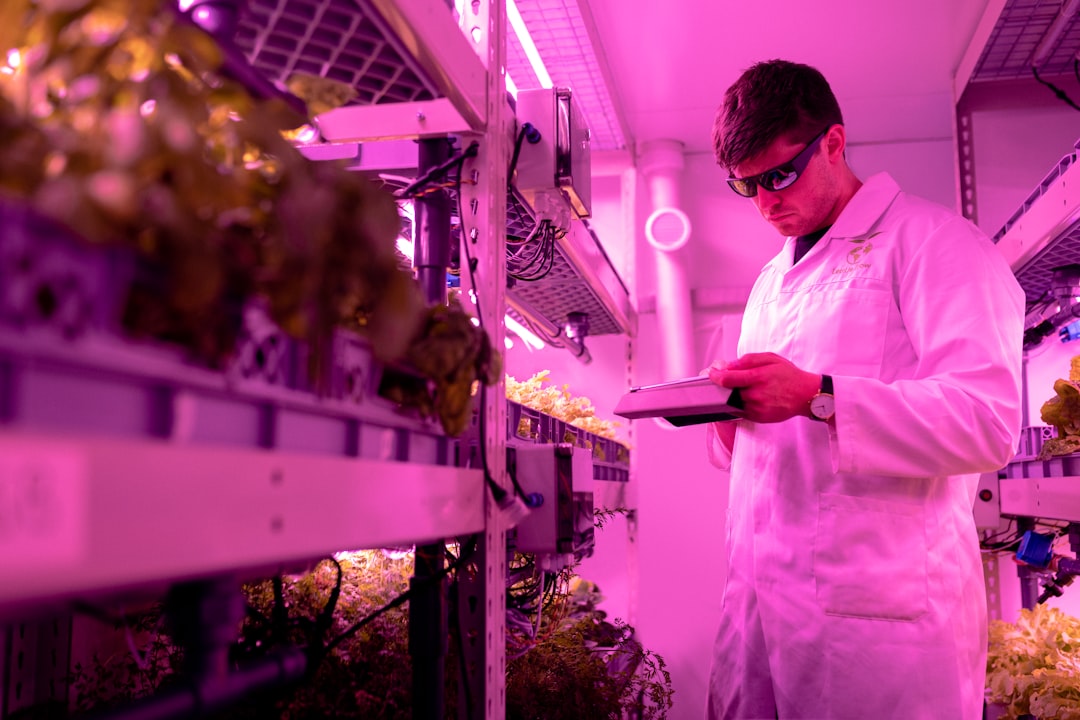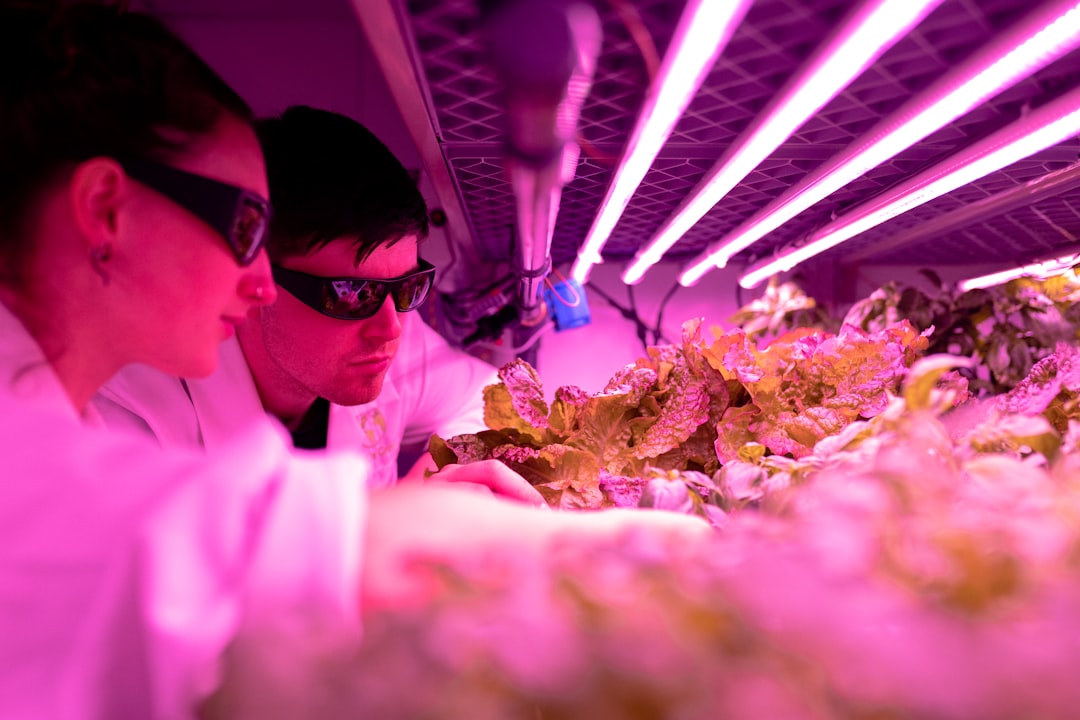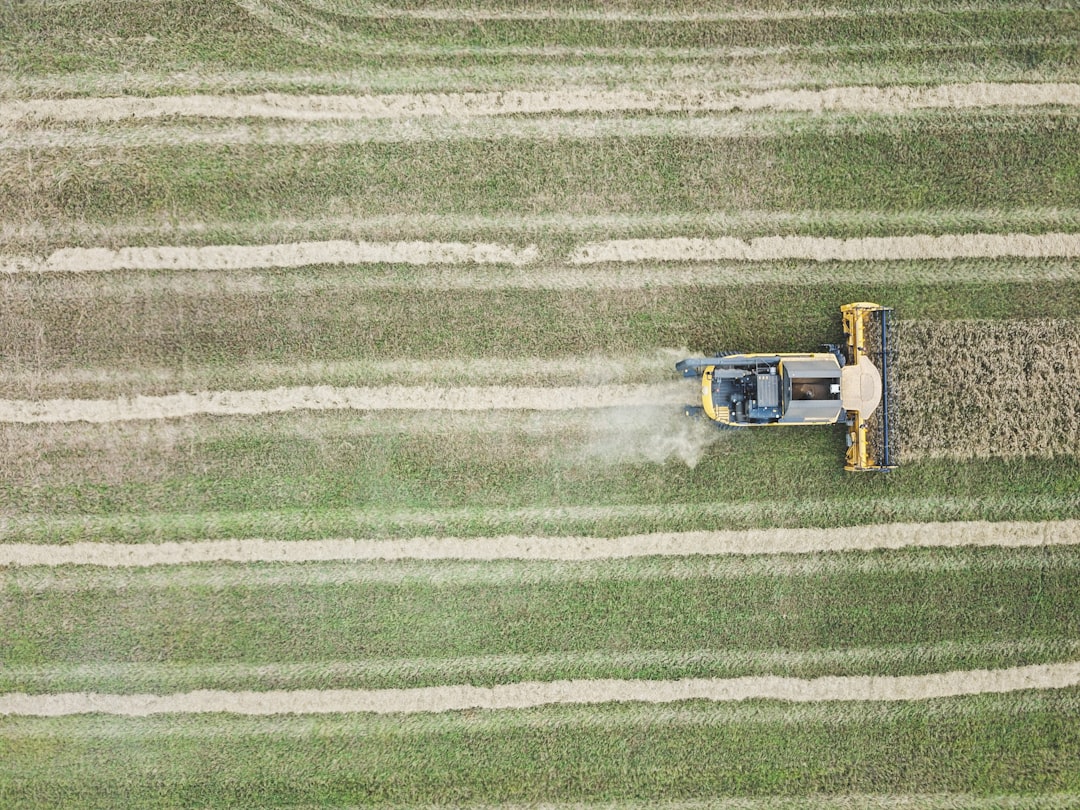The world’s population is growing at an alarming pace, and with it, the demand for food. To meet this ever-increasing demand, the agriculture industry needs to become more efficient and sustainable. This is where artificial intelligence (AI) comes into play.
AI can help farmers improve their yield, reduce costs, and create a more sustainable farming system. AI-powered farming techniques can optimize crop management, increase efficiency, and reduce resource consumption. With the help of AI, farmers can be more selective in their application of fertilizers and other inputs, reducing waste and minimizing damage to the environment.
Furthermore, AI-powered solutions can help farmers manage their crops and livestock more effectively. These solutions use data from sensors, drones, and other sources to monitor and automate various aspects of farming, such as irrigation and harvesting. By leveraging AI, farmers can gain valuable insights into their operations and make more informed decisions.
In this blog post, we’ll explore the different ways AI is transforming the agriculture industry. From precision agriculture to pest control, we’ll examine how AI is used to optimize crop management, increase efficiency, and reduce waste. We’ll also discuss the potential benefits and concerns associated with AI in agriculture.
Planting the Seeds: How AI is Used in Precision Agriculture
Precision agriculture is the fine-tuned management of crops, from planting all the way to harvest, using technology to optimize each step. Artificial intelligence (AI) is a vital component of this process, as it helps to gather and analyze data that enables more informed decision-making in agriculture.
First and foremost, AI is used for soil analysis. By analyzing information about a field’s soil composition, farmers can better understand the nutrients already present and determine which ones may be lacking. AI can help to create detailed maps of soils, some even including satellite imagery, helping farmers to determine which areas of fields may have higher potential for growth.
AI can also help to determine planting times for crops by looking at past weather data and analyzing current weather patterns, providing farmers with a more precise timeline for planting. And, when it’s time to plant, precision seeders can be programmed to plant specific seed densities in specific areas of the field, based on soil quality.
Once crops are planted and begin to grow, AI can assist in monitoring crop health. This can be done through the use of visual cameras, mounted on drones that can be flown over fields, or even cameras on tractors or other farm machinery. The images are then analyzed, with AI identifying any abnormalities that may indicate disease or pest infestation. Early identification can lead to more prompt treatment and prevention of crop loss.
Additionally, AI can help to optimize fertilizer and herbicide application, based on factors like weather conditions, moisture levels, and the stage of growth for the plants. This allows for more efficient use of resources, and can even prevent product waste or environmental damage.
Lastly, AI can help with irrigation management, monitoring water levels and predicting the amounts of water needed for each area of the farm. Farmers can make more informed decisions on when and how often to water their crops, leading to more efficient use of resources and ultimately higher crop yields.
Overall, precision agriculture is an exciting and rapidly expanding field, as AI tools become more sophisticated and accessible to farmers of all sizes. Through its incorporation of AI, agriculture is becoming more sustainable and efficient, providing higher yields to support the growing global population.
Early identification can lead to more prompt treatment and prevention of crop loss.
Fertile Ground: AI’s Impact on Crop Management and Yield Optimization
Artificial intelligence is revolutionizing the way farmers manage their crops and optimize yield to increase profitability. By using AI, farmers can gain better insights into the health of their crops, detect anomalies that may threaten them, and adjust their management practices accordingly.
One of the primary uses of AI in crop management is in predicting yields through the use of machine learning algorithms. These algorithms analyze data such as weather patterns, soil conditions, and crop type to make precise predictions about future crop yields. This information allows farmers to make more informed decisions about planting and harvesting, ensuring that they maximize their crop yield and minimize any potential losses.
Another way in which AI is revolutionizing crop management is through the use of precision agriculture. Precision agriculture is a technique that involves using data and technology to optimize farming practices. It involves using sensors, drones, and other technologies to collect data on soil conditions, crop health, and weather patterns to make informed decisions about crop management.
By using AI to analyze this data, farmers can make better decisions about which crops to plant, when to plant them, and how to care for them throughout their growth cycle. AI can also help farmers determine the optimal timing for irrigation, fertilization, and pest control, reducing waste and maximizing plant growth.
In addition to helping farmers improve crop yield and reduce waste, AI can also help them to use resources more efficiently. For example, by using machine learning algorithms to analyze weather patterns and soil conditions, farmers can determine the optimal timing for irrigation to maximize water usage and reduce runoff.
AI can also help farmers in their efforts to mitigate climate change. By analyzing weather patterns, carbon storage, and other environmental factors, farmers can make more informed decisions about crop management and land use, helping to reduce greenhouse gas emissions and improve soil health.
In conclusion, AI is having a profound impact on crop management and yield optimization in agriculture. By providing farmers with the tools and insights they need to make more informed decisions, AI is helping to increase crop yields, reduce waste, and mitigate the effects of climate change. As technological advancements continue to emerge, it is likely that AI will play an even more significant role in the future of agriculture.
One of the primary uses of AI in crop management is in predicting yields through the use of machine learning algorithms.
Weeding Out the Competition: AI and Pest Control
Pest control has always been a significant challenge for farmers, and it’s one of the major reasons why they resort to using pesticides. However, pesticides have negative environmental impacts and can also affect human health. Fortunately, advances in AI can now minimize the use of pesticides and reduce their negative effects on the environment.
AI has revolutionized the way farmers detect and control pests. With AI-powered drones and sensors, it’s now possible to monitor crop fields and detect pest presence early enough before they cause damage. AI can analyze data collected by drones, such as temperature, moisture, and plant growth rates to pinpoint areas that need more attention.
Additionally, with machine learning algorithms, AI can predict the behavior of pests and recommend the most effective control strategies. It can determine the ideal time to apply pesticides and the most appropriate dosage for each type of pest, making pest control more precise and efficient.
Furthermore, AI can help farmers implement preventive pest control measures. It can analyze the data collected from previous years, identify patterns, and predict the likelihood of pest infestations in specific areas. Armed with this information, farmers can take proactive measures to prevent infestations rather than wait for pests to cause damage.
In conclusion, the use of AI in pest control has significant benefits for farmers and the environment. With AI, farmers don’t have to rely heavily on pesticides, which can be harmful to the environment and human health. They can detect and control pests more efficiently and implement preventive measures to reduce crop damage. The use of AI in agriculture is rapidly increasing, and it’s clear that AI technology will continue to revolutionize the agriculture industry for years to come.
However, pesticides have negative environmental impacts and can also affect human health.
Harvest Time: AI’s Role in Predictive Analytics and Supply Chain Management
As technology continues to advance, the agriculture industry has seen a significant growth in the use of Artificial Intelligence (AI) to improve various aspects of Crop yield and farm management. One of the most critical phases in agriculture is harvesting – the process of gathering crops at the peak of ripeness, and preparing them for market. This process is both time-consuming and labor-intensive, often requiring a significant number of workers and resources to complete.
Fortunately, AI has made significant strides in this area, with advances in predictive analytics and supply chain management – making it easier for farmers to predict when to harvest crops, optimize their production yield, and manage their supply chain more efficiently. Predictive analytics is the practice of analyzing data to make predictions about future events or behaviors. In agriculture, predictive analytics can be used to better understand weather patterns, soil quality and moisture levels, and other factors that determine crop yield. The data can also be used to make informed decisions about crop management practices such as when to harvest or when to apply fertilizers.
Supply chain management is another area where AI has made significant strides in agriculture. Farmers can now track their shipments and inventory using sophisticated algorithms, which can help them manage their supply chain more efficiently. This can help reduce waste, improve delivery times, and ultimately increase profits.
Predictive analytics and supply chain management work together to provide farmers with a more complete picture of their crop yield and supply chain management. By using AI to analyze data and make predictions, farmers can make better-informed decisions about when to harvest, optimize their production yield, and manage their supply chain more efficiently.
To further make use of AI in agriculture, several agricultural technology companies and startups are developing AI-powered harvesters that use sensors and machine learning to automate harvesting processes. These harvesters can identify ripe crops, assess yield per unit area, and determine the optimal time to harvest each crop. This technology can significantly reduce the amount of labor and resources required for the process, making it more efficient and cost-effective.
In conclusion, Artificial Intelligence has made significant strides in the agriculture industry, with important advancements in predictive analytics and supply chain management becoming more common. These advances are providing farmers with the tools they need to make more informed decisions about harvesting, optimize their production yield, and manage their supply chain more efficiently. The future potential for AI in agriculture is vast, and with continued investment and development, it could revolutionize the industry in ways we cannot yet imagine.
This can help reduce waste, improve delivery times, and ultimately increase profits.
Cultivating the Future: Potential Benefits and Concerns with AI in Agriculture
Artificial intelligence (AI) is revolutionizing the agriculture industry in numerous ways, as discussed in the previous sections. However, it is important to analyze potential benefits and concerns that come with this technological advancement.
One of the most significant benefits of using AI in agriculture is increased efficiency in various operations, including planting, watering, fertilizing, pest control, and harvesting. AI can provide accurate information regarding the moisture levels of soil and the status of crops, enabling farmers to make informed decisions, resulting in optimal yield and profitability.
Additionally, AI-powered sensors, drones, and robots can provide detailed information about the conditions of farmland, including the quantity and quality of crops, allowing for more precise control of resources for planting and harvesting. This, in turn, reduces waste, conserves resources, and minimizes damage to the environment.
Moreover, AI is capable of predicting weather patterns and analyzing climate change data, which informs farmers of potential risks and helps them take preventive measures. AI can also assist in identifying crop diseases and pests, enabling farmers to take prompt measures to prevent their spread and increase their resilience.
However, with all technological advancements come potential concerns. One major concern is that AI technology may lead to job losses, as machines can perform jobs that were once the exclusive domain of human laborers. This could lead to unemployment and may exacerbate economic inequality between different groups of society.
Another concern is data privacy and security. With the use of advanced technologies like AI, sensitive information may be collected, stored, and analyzed, raising the potential for data breaches and cyber-attacks. Farmers and agricultural companies must ensure that they have robust data governance and security policies to prevent compromises of confidential data.
Finally, there is the risk of over-reliance on technology. Farmers may become too dependent on AI, and could neglect taking essential precautionary measures or overlook potential issues that require human intervention, such as the impact of climate change on farmlands and the availability of high-quality seeds.
In conclusion, the benefits of AI in agriculture cannot be denied, and the concerns surrounding its use must not be overlooked. By adopting appropriate measures and guidelines, farmers and agricultural companies can reap the benefits of AI while mitigating potential risks. As technology continues to evolve, it is essential to strike a balance between maximizing the potential of AI while safeguarding the interests of all stakeholders in the agriculture industry.
In conclusion, the benefits of AI in agriculture cannot be denied, and the concerns surrounding its use must not be overlooked.
Conclusion: The Growing Importance of AI in Agriculture
In conclusion, agriculture has been one of the oldest professions in human history, and its importance cannot be overstated. However, to keep up with the demands of worldwide food production, we need to embrace cutting-edge technology, and that is where Artificial Intelligence (AI) comes into play.
As we discussed in this post, AI can be used in a wide range of agricultural applications, from planting and crop management to pest control and predictive analytics. AI-powered machines and algorithms can monitor and analyze vast amounts of data, enabling farmers to make informed decisions in real-time, leading to better yields, reduced waste, and more sustainable practices.
For example, AI algorithms can analyze weather patterns, soil tests, and historical yield data to help farmers make informed choices about the best planting times, crop variety selection, and irrigation strategies. Furthermore, AI-powered drones and sensors can detect plant stress, nutrient deficiencies, and pest infestations, and provide targeted treatments, reducing the need for harmful pesticides and herbicides.
However, some may argue that the widespread adoption of AI in agriculture may lead to job losses and increased dependence on technology, putting smaller farmers at a disadvantage. While these concerns are genuine, we believe that the benefits of AI far outweigh the drawbacks. By using AI tools, farmers can optimize production, reduce waste and increase efficiency, thereby boosting their profits, without sacrificing sustainability or quality. Ultimately, AI can help farmers feed more people and ensure that the world’s growing population has access to safe and nutritious food.
In conclusion, the use of AI in agriculture is no longer a fantasy but a growing reality. As technology continues to evolve, so will the ways in which we use AI to tackle the challenges of food production. It is evident that the adoption of AI in agriculture will rely on collaboration between farmers, policy-makers, and technology providers to ensure that AI is used responsibly and sustainably, so that we can reap the benefits of technology to feed the world.
Thank you for reading, and we hope that this post has been informative and insightful.





